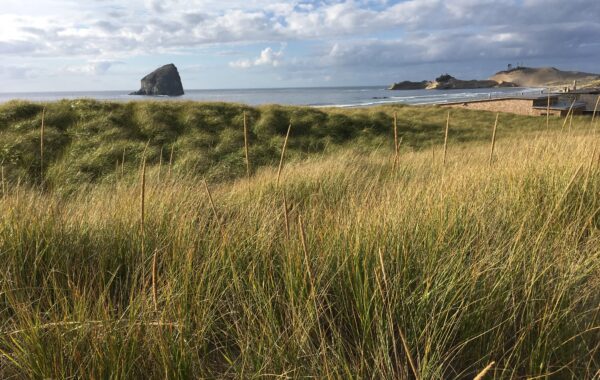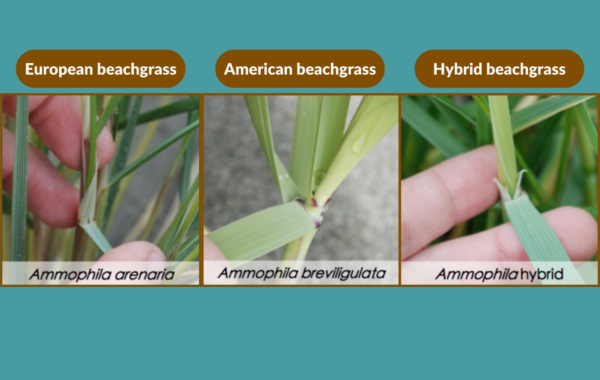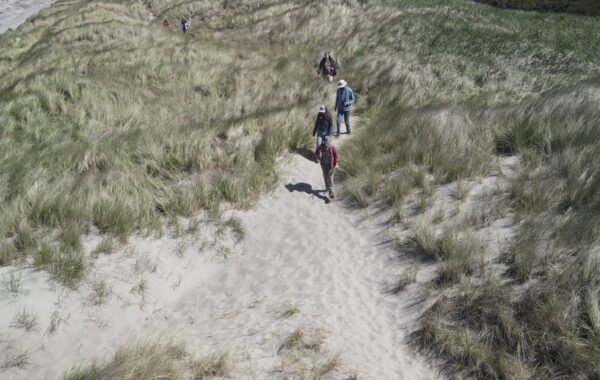Community Science
Help identify and map grasses in dunes

Hybrid Beachgrass Mapping in the Pacific Northwest
Beachgrass was planted in Oregon in the early 1900s to catch sand, which accumulated into dunes, protecting coastal towns from sand blowing into their homes and businesses and covering roads. These grasses and the dunes they built transformed Oregon’s beaches.
CoastWatch works with Oregon State University students in Sally Hackers lab to recruit volunteers and train them to use iNaturalist for this project. So far, no hybrid beachgrasses have been found south of Bob Straub State Park, so this is a good area to monitor!
Spot the Difference
The two beachgrasses planted then were European beachgrass, (Ammophila arenaria) and American beachgrass (Ammophila breviligulata). European beachgrass (AKA European marram grass) has thin leaves, a long, pointy ligule, and is dominant from Central Oregon through California. American beachgrass (AKA American marram grass) has broader leaves, a short, flat ligule, and is dominant from Northern Oregon through Washington.

Their hybrid has a medium-length, flat-topped ligule and medium-width leaves. On iNaturalist, volunteers can ID the hybrid as Ammophila arenaria x breviligulata or “Hybrid marram grass.”
Another common grass on Pacific Northwest dunes is the native American dune grass (Leymus mollis). This species has broad, dark green leaves covered in a glaucous coating and no ridges.

To join a community science project, start by adopting a CoastWatch Mile.
Community Science
